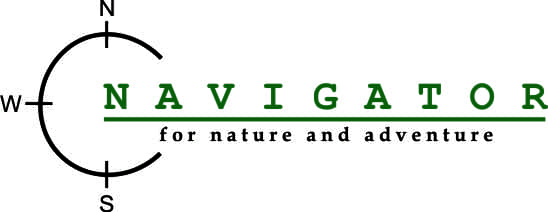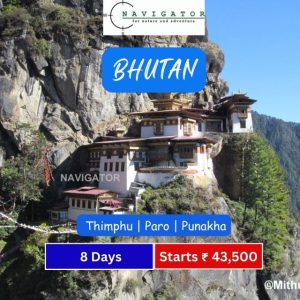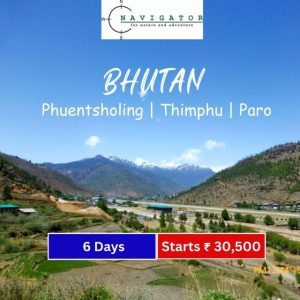Bhutan, a small Himalayan kingdom, offers travellers a unique blend of culture, spirituality, and natural beauty. Often referred to as the “Land of the Thunder Dragon,” Bhutan has preserved its ancient traditions while embracing modernity in a balanced way. Here’s a guide for Bhutan tourism including to some of the must-visit places in Bhutan that showcase its rich heritage and stunning landscapes. Along with Bhutan visa, currency, how to reach etc.
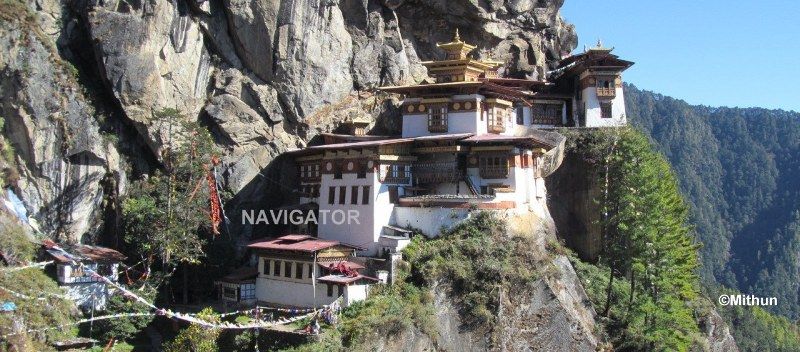
Bhutan Tourism – Places to visit in Bhutan
Thimphu: The Capital of Bhutan
Thimphu, Bhutan’s capital, is a city where tradition meets modernity. Nestled in a scenic valley, Thimphu is the heart of Bhutan’s government and economy. Begin your visit at Tashichho Dzong, a majestic fortress that houses the king’s offices and the monastic body. The Buddha Dordenma, a towering statue overlooking the city, is a symbol of peace and offers stunning views of the valley. For a cultural experience, explore the National Memorial Chorten, a stupa where locals gather daily for prayer and meditation. The Thimphu Weekend Market is another must-visit, bustling with vendors selling fresh produce, handicrafts, and traditional goods. Art lovers should visit the National Institute for Zorig Chusum, where students learn the 13 traditional arts and crafts of Bhutan. Thimphu also offers modern amenities, including cafes, restaurants, and shops, making it a city that blends the old with the new. With its rich cultural heritage and vibrant urban life, Thimphu provides a unique insight into Bhutan’s evolving identity.
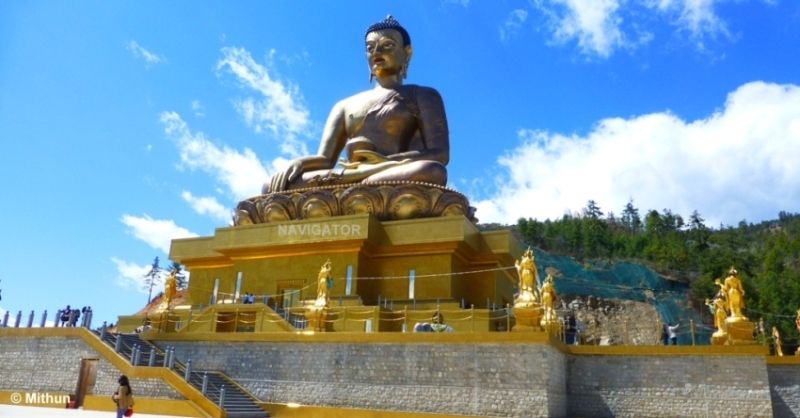
Paro: A Valley of Spiritual Beauty
Paro is one of Bhutan’s most beautiful valleys, known for its spiritual significance and stunning landscapes. The highlight of Paro is the Taktsang Monastery, or Tiger’s Nest, perched on a cliffside 900 meters above the valley floor. This sacred site, where Guru Rinpoche is said to have meditated, offers a rewarding hike with breathtaking views. Paro also features the Rinpung Dzong, a fortress-monastery that showcases traditional Bhutanese architecture with its intricate woodwork and commanding presence. Nearby, the Kyichu Lhakhang, one of Bhutan’s oldest temples, offers a serene environment for reflection and prayer. The temple, believed to have been built in the 7th century, is an important pilgrimage site. Paro town itself is charming, with traditional wooden buildings, shops, and cafes that reflect Bhutan’s cultural heritage. The valley’s combination of natural beauty and spiritual sites makes Paro a must-visit destination for those seeking both adventure and tranquility.
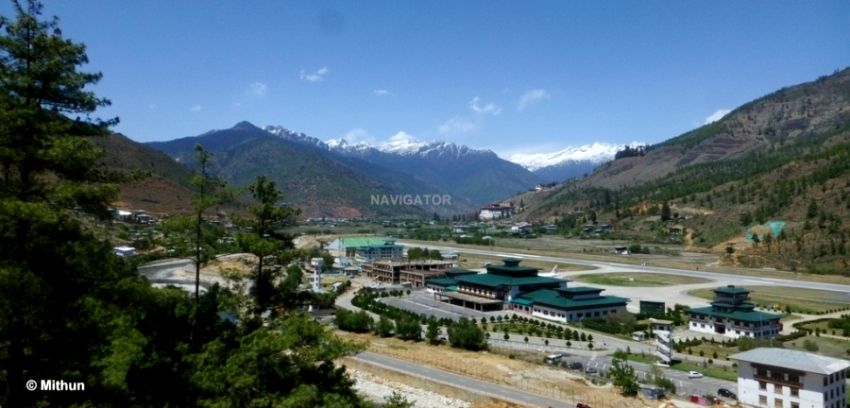
Punakha: The Fertile Valley of Happiness
Punakha, the former capital of Bhutan, is a valley rich in history and natural beauty. The Punakha Dzong, also known as the “Palace of Great Happiness,” stands majestically at the confluence of the Mo Chhu and Pho Chhu rivers. This fortress is a masterpiece of Bhutanese architecture and serves as the winter residence of the monastic body. Punakha Dzong is also the site of the annual Punakha Tshechu, a vibrant festival that attracts visitors from all over Bhutan. For a unique cultural experience, visit the Chimi Lhakhang, also known as the Fertility Temple, dedicated to Lama Drukpa Kunley, the “Divine Madman.” Couples visit this temple to receive blessings for fertility. Another highlight is the Khamsum Yulley Namgyal Chorten, a stupa built by the Queen Mother. The hike to the stupa offers panoramic views of the valley and a glimpse into rural Bhutanese life. Punakha’s combination of historical significance and stunning landscapes makes it a destination that should not be missed.
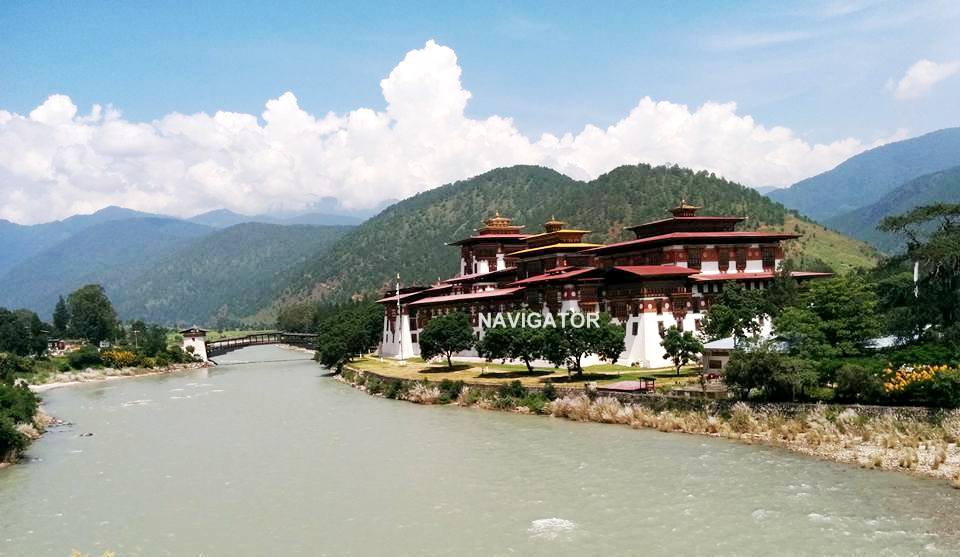
Dochula Pass: A Scenic Himalayan Gateway
Dochula Pass, located between Thimphu and Punakha, is one of Bhutan’s most scenic mountain passes. At an altitude of 3,100 meters, Dochula offers breathtaking views of the eastern Himalayas, including Bhutan’s highest peaks like Gangkar Puensum. The pass is also home to the Druk Wangyal Chortens, a collection of 108 stupas built to honor Bhutanese soldiers who lost their lives in battle. These stupas, with their intricate designs, stand as a symbol of peace and unity. Visitors often stop at Dochula to enjoy the panoramic views, especially on clear days when the snow-capped mountains are visible. The Dochula Druk Wangyel Festival is held here every December, featuring traditional dances and performances in honor of the fourth King of Bhutan. Whether passing through or spending time to take in the views, Dochula Pass offers a serene and picturesque experience, making it a popular stop for travelers exploring Bhutan.
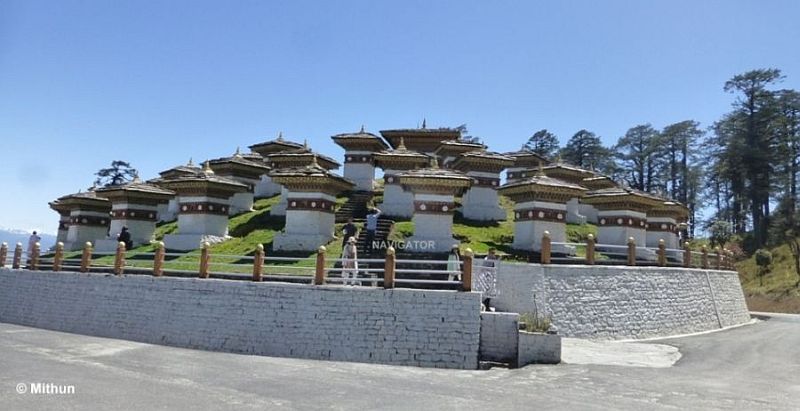
Chele La Pass: The Highest Motorable Road in Bhutan
Chele La Pass, at 3,988 meters, is the highest motorable pass in Bhutan. It connects the Paro and Haa valleys and offers stunning panoramic views of the surrounding mountains, including the sacred Jomolhari and Jichu Drake peaks. The pass is a popular spot for picnics, short hikes, and photography, especially in the spring when the area is blanketed with rhododendrons in full bloom. On a clear day, visitors can also see the distant peaks of the Himalayas stretching across the horizon. Chele La is also known for its colorful prayer flags that flutter in the wind, symbolizing peace and protection. The pass offers a peaceful escape into nature, with opportunities to explore the alpine forests and enjoy the crisp mountain air. Whether you’re a nature lover, a photography enthusiast, or simply seeking a quiet place to reflect, Chele La Pass provides a memorable experience in Bhutan’s rugged landscapes.
Haa Valley: Bhutan’s Hidden Gem
Haa Valley, one of Bhutan’s most remote and least-visited regions, offers a glimpse into the country’s unspoiled beauty and traditional way of life. The valley is known for its pristine forests, rolling hills, and traditional Bhutanese villages. The Lhakhang Karpo (White Temple) and Lhakhang Nagpo (Black Temple) are two significant religious sites in the valley, both dating back to the 7th century and associated with the Tibetan King Songtsen Gampo. The valley is also home to the Haa Summer Festival, an annual event that celebrates the region’s unique culture with traditional sports, dances, and local cuisine. The Haa Chu river runs through the valley, offering opportunities for fishing and picnicking along its banks. The journey to Haa Valley, especially via Chele La Pass, provides breathtaking views of the surrounding mountains and forests. For those seeking tranquility and a deeper connection with Bhutan’s natural and cultural heritage, Haa Valley offers an unforgettable experience.
Bhutan Tourism Packages
Gangtey & Phobjikha: The Valley of Black-Necked Cranes
Gangtey and Phobjikha Valley, located in central Bhutan, are among the country’s most scenic and ecologically significant regions. The valley is a broad, glacial plain that transforms into a lush, green paradise during the warmer months. It’s most famous as the winter home of the endangered black-necked cranes, which migrate from Tibet each year. The Gangtey Monastery, perched on a hill overlooking the valley, is an important religious site and one of the few Nyingmapa monasteries in Bhutan. Visitors often hike the Gangtey Nature Trail, a gentle path that winds through forests, villages, and open meadows, offering stunning views of the valley and the cranes during the migration season. Phobjikha Valley’s tranquil beauty, combined with its cultural and ecological significance, makes it a must-visit destination for nature lovers and those seeking peace and serenity. The valley is also known for its community-based tourism, where visitors can experience traditional Bhutanese village life by staying in local homestays. Gangtey and Phobjikha offer a unique opportunity to connect with nature and experience Bhutan’s rich cultural heritage in a serene and picturesque setting.
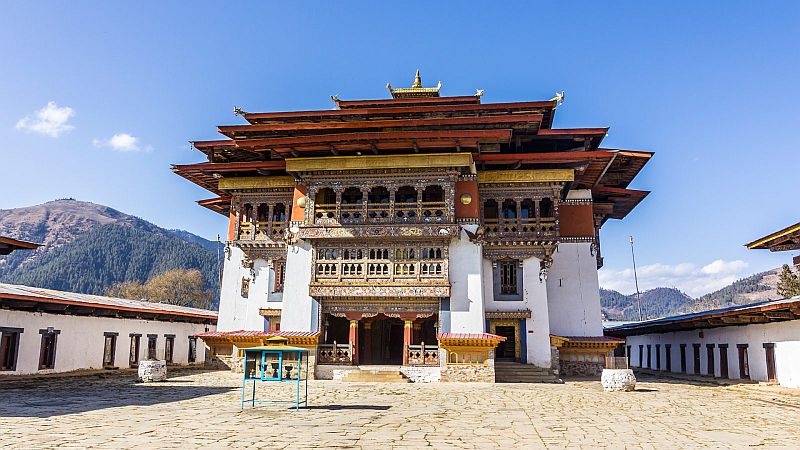
Bumthang: The Spiritual Heart of Bhutan Tourism
Bumthang, often referred to as the spiritual heartland of Bhutan, is a region rich in history, culture, and natural beauty. Comprising four major valleys—Chokhor, Tang, Ura, and Chhume—Bumthang is home to some of Bhutan’s oldest and most sacred temples and monasteries. Jakar Dzong, also known as the “Fortress of the White Bird,” overlooks the main valley and serves as the administrative center of the region. Bumthang is also the birthplace of many of Bhutan’s spiritual leaders and is closely associated with Guru Rinpoche, who brought Buddhism to Bhutan in the 8th century. Kurjey Lhakhang, one of the most important temples in Bhutan, houses the body imprint of Guru Rinpoche, making it a significant pilgrimage site. Another key site is Tamshing Lhakhang, founded by the famous saint Pema Lingpa, known for its ancient murals and sacred relics. Bumthang’s valleys are also known for their apple orchards, cheese production, and traditional handicrafts, offering visitors a blend of spiritual and cultural experiences. The region’s serene environment, combined with its rich religious heritage, makes Bumthang a must-visit for those seeking to explore Bhutan’s spiritual and historical roots.
Trongsa: The Ancestral Home of Bhutan’s Kings
Trongsa, located in central Bhutan, holds great historical and cultural significance as the ancestral home of Bhutan’s royal family. The town is dominated by the Trongsa Dzong, one of the largest and most impressive dzongs in Bhutan. Built in the 17th century, Trongsa Dzong served as the seat of power for Bhutan’s kings before they ascended to the throne. The dzong’s strategic location on a ridge overlooking the Mangde Chhu River allowed it to control the east-west trade routes, making it a key political center. Visitors can explore the dzong’s labyrinth of courtyards, temples, and administrative offices, gaining insight into Bhutan’s monastic and political history. Nearby, the Ta Dzong, a watchtower that once guarded the dzong, has been converted into the Royal Heritage Museum. The museum offers exhibits on Bhutan’s history, culture, and the lineage of the royal family. Trongsa’s dramatic landscape, combined with its rich historical legacy, makes it an essential stop for those interested in Bhutan’s royal history and architecture. The town’s scenic beauty and its importance in Bhutan’s history provide a captivating experience for travelers exploring the kingdom.
Bhutan is a land of stunning landscapes, vibrant culture, and deep spirituality. From the bustling streets of Thimphu to the serene temples of Bumthang, each destination in Bhutan offers something unique and memorable. Whether you’re seeking adventure, peace, or a deeper understanding of Bhutanese culture, this Himalayan kingdom will leave you with lasting impressions. Explore Bhutan and discover the magic that lies within its valleys and mountains.
Best Time to Visit
Best time to visit Bhutan
You can plan your travel to Bhutan at any time of the year. Every season will offer you a different flavor of Bhutan. Weather in Bhutan varies from south to north. Northern Bhutan bordering with Tibet is colder & southern Bhutan bordering with India is hot & humid. Bhutan mainly has four seasons.
Spring (Match to May)
it is considered a very good season with moderate temperature. This tis the tome for green valleys, rhododendrons, fresh vegetables & friuits.
Autumn (September to November)
It is probably the best time to have clear weather, blue sky. It provides magnificent view of valleys, snow capped mountains & rivers with an opportunity to take great photographs.
Monsoon (June to August)
This time of the year gets more rain fall other seasons. But the monsoon is not so prominent as it is in the northern India.
Winter (December to February)
In winter Bhutan is mostly sunny & cold. The country gets almost no precipitation in winter. In winter frost can be seen & snowfall in common at the elevation above 3000 meters.
Temperature in various cities
| Month | o Celsius | Paro | Thimphu | Punakha |
| January | Max Min | 9.4 -5.8 | 12.3 -2.6 | 17.0 4.3 |
| February | Max Min | 13.0 1.5 | 14.4 0.6 | 19.0 7.8 |
| March | Max Min | 14.5 0.6 | 16.4 3.9 | 22.8 10.4 |
| April | Max Min | 17.6 4.6 | 20.0 7.1 | 26.2 12.9 |
| May | Max Min | 23.5 10.6 | 22.5 13.1 | 29.1 17.7 |
| June | Max Min | 25.4 14.1 | 24.4 15.2 | 29.2 20.1 |
| July | Max Min | 26.8 14.9 | 25.9 15.6 | 30.4 20.5 |
| August | MaxMin | 25.3 14.7 | 25.0 15.8 | 29.1 20 |
| September | Max Min | 23.4 11.7 | 23.1 15 | 27.5 19.1 |
| October | Max Min | 18.7 7.4 | 21.9 10.4 | 26.1 14.7 |
| November | Max Min | 13.9 1.4 | 17.9 5.0 | 22.6 9.6 |
| December | Max Min | 11.2 -1.7 | 14.5 -1.1 | 19.1 6.3 |
To Reach
How to reach Bhutan
By Air
Paro (PBH) is having the only international airport of Bhutan. Paro is well connected with Indian cities like Bagdogra, Kolkata, Delhi, Mumbai, Bodhgaya, Guwahati & other internatonal destinations like Kathamandu, Dhaka & Bangkok. Druk Air & Bhutan Airlines connect Bhutan with these destinations.
In Indian side the nearest airport is Bagdogra (IXB). Bhutan border town Phuntsholing in (170km.) is 4.30 hrs journey from Bagdogra.
By Train
Bhutan does not have any rail connectivity with in the country. But it can be accessed through Railway stations located in India. The nearest railway station is Hasimara is approx 20km (45 min) away from Phuntsholing. Phuntsholing van also be accessed through New Alipurduar Jn. (60 km) & New Jalpaiguri (NJP) (160 km).
By Road
Bhutan can be accessed by road from Indian side through the bordering city Phuntsholing.
Visa & Permit
Bhutan Tourism: Bhutan Visa/Permit
Bhutan Permit (for Indians) – 4 copies passport size recent colour photographs, Photo ID proof (Passport/ Voter ID) & hotel confirmation vouchers. For minor, its compulsory to carry original birth certificate along with school photo ID or passport.
Permit cannot be issued during Govt. holidays & weekends. So please plan your tour accordingly.
Other tourists must have visa clearance before Bhutan. Visa can be processed online by providing photo page of your passport.
Permit issued in Phuntsholing & Paro will be valid for Thimphu & Paro only.
Special permit for Punakha, Wangdue, Bumthang, Trongsa ect. will be available from Immigration office located in Thimphu.
Thimphu Immigration office is closed on Saturday, Sunday & Government holidays. It may remain close with sudden declared holiday without any prior notice.
Currency
Currency of Bhutan
Bhutan currency in called Ngultrum & carries equal value to Indian Rupee. Indian Rupees are widely accepted in Bhutan except 500 rupee notes.
Bank & major hotels can exchange major currencies. But its important to carry the bank exchange receipt to get it changed back to US Dollar. Foreigners cannot carry Indian Rupee.
Credit & Debit cards (Visa & Mastercard) are accepted in Bhutan. But the service is not widely available. So it is always advisable to carry sufficient cash.
MAP
Bhutan Tourism Guide MAP
Booking
Fill the form below to send your enquiry. Comments or questions are welcome.
